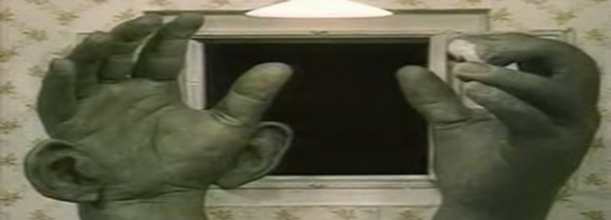Meat Love Don’t Cost a Thing

The highest-grossing cinematic ventures of the last two years have all shared a common theme: fantastical special effects that transcend the realm of ordinary human consciousness. Avatar, the Twilight Saga, Harry Potter and the Deathly Hallows- all three have successfully transported us from our grey existences (don’t jump on the defence- our existences are comparatively grey, no argument) to a world that throws off the shackles of mortal constraint.
The fantasy genre is one that carries high expectations. Since the exquisite hallucination that was Avatar in 3D, I won’t give credit to any film of this category unless I leave the cinema feeling like I have glimpsed a vision of a higher world. I want to enter a world that is free, free of such obstructions as water bills and gravity.
These multi-million dollar enterprises are an investment into the most limitless and sublime commodity: the imagination. Each film is like a Stannah stairlift ride to the greatest heights of escapism. You just sit back and take pleasure in being carried, without the faintest sense of guilt at indulging in such an unashamedly lavish experience. Since the world begun Avatar-ing themselves online last year, the pressure has been on to make fantasy films bigger, more spectacular and more expensive to produce. Question is, is there a correlation between state of the art cinema equipment and imaginative freedom?
Jan Svankmajer wouldn’t say so.
Back in the dark depths of winter I accidentally stumbled across a collection of short puppetry films that were made back in the 60s. Drawn by titles such as Meat Love, I happily set aside half an hour to marvel at footage of oddballs playing with little wooden people on strings (you may judge all you like). The films are created by Jan Svankmajer, a Czech surrealist artist whose work would be banned by communist authorities by the early 70s.
Today, Svankmajer is a prolific figure in the world of cinema, though few people realise it. Inspired by Edgar Allen Poe, and a great influence behind Tim Burton’s work, the Prague-born artist has quietly taken and passed on the baton of all that is weird, haunting and uncanny. As suggested (to some) by the title Meat Love, Svankmajer’s films often centre on food. Somewhere between living and inanimate, existing with the sole purpose of being consumed, the grotesque slabs of meat that repeatedly feature are a simple medium used to tap into that implacable fear of what we cannot explain. Perhaps, it is conflict between the perishable human body and the indefinable entity that is the mind.
Perhaps, of course, we are just a little bit freaked out by dancing meat. See for yourselves…
As far as technology and cinematic techniques go, Svankmajer’s early films were innovative but ultimately basic. Much of the idiosyncratic movements that mark the films out as a Svankmajer are the result of stop-motion techniques and fast-motion sequences. Beyond this, inanimate objects are anthropomorphized (yes, anthropomorphized) by such methods as ‘claymation’, which is literally the use of play-dough, just endowed with a name ending in ‘-tion’ for credibility.
Yet, forget the blockbusters of the late-noughties, of all the cinema that has left me questioning my perception of reality, Svankmajer’s low-budget feats of the imagination top the chart. The film that most resonates is A Quiet Week in the House (1969). Totally free of dialogue, the only sound to be heard throughout the entire 20-minute experience is that of the projector whirring in the background. The cryptic plot begins with an espionage film set-up, showing a spy carefully approaching a large, derelict house. Once inside the house, the lone man drills a small hole in the wall dividing the hallway and the surreal world contained in the rooms beyond. Once a day, for 7 days, the ritualistic voyeurism is carried out and marked off on a calender. No-one could accuse you of just reading sex into everything if you find yourself identifying a sordid aspect in this film. The first hallucination shows a large, red tongue rolling itself across dirty dishes through the eye of a quivering camera lens. Juxtapose that with cold, staring children’s dolls and the viewer is utterly removed from their comfort zone, transfixed by the disturbing montage of mundane and dream-like phantasmagoria.
There are no explanations. This is no easy Stannah stairlift ride. The film appropriately ends with annihilation, and it is up to you to extract the meaning. This kind of escapism isn’t a day trip, the simple and yet mind-blowingly bizarre images take up a permanent lodging in the imagination- all the more because of the absence of big-budget cinematic equipment. One interpretation of A Quiet Week in the House is that the ending critiques technological progress, almost as if it is anticipating the power of computerised effects over raw artistry. Though, of course, Svankmajer might now be deemed a hypocrite if that is the case. One thing’s for certain, these short surrealist pictures are a triumph of an imagination so limitless that you will never fully understand the world that you glimpsed- you’ll only know that you want to see more.





Recent Comments